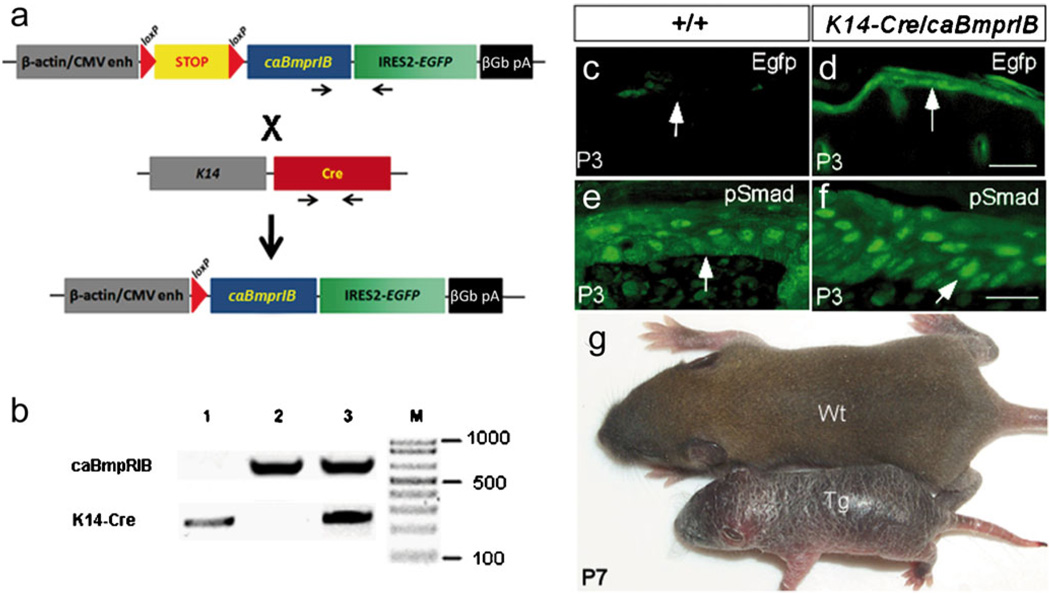Fig. 1.
Transgenic construct and phenotype of K14-Cre/caBmprIB mice. a Representation of the conditional caBmprIB transgenic construct (paired arrows primers for genotyping). b Polymerase chain reaction (PCR)-based genotyping of transgenic mice (lane 1 K14-Cre mouse, lane 2 caBmprIB conditional transgenic mouse, lane 3 K14-Cre/caBmprIB double-transgenic mouse. c, d Egfp expression was detected in the epidermis (arrows) of the K14-Cre/caBmprIB mouse (d) but not in the wild-type control (c). e, f Immunostaining of pSmad1/5/8 in the epidermis (arrows) of postnatal day 3 (P3) wild-type (e) and transgenic mice (f). Stronger and larger numbers of pSmad1/5/8-positive cells were detected in K14-Cre/caBmprIB epidermis (f) than that in wild-type control (e). g A P7 K14-Cre/caBmprIB mouse (Tg) has a dry and flaky skin phenotype, as compared with a control littermate (Wt). Bar 100 µm (c, d), 50 µm (e, f)

